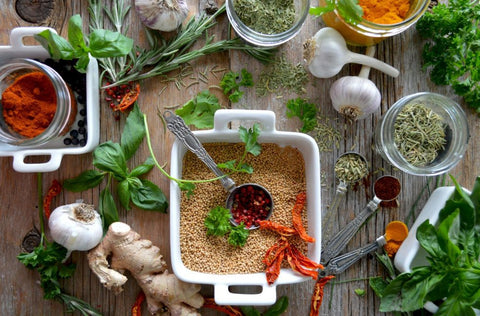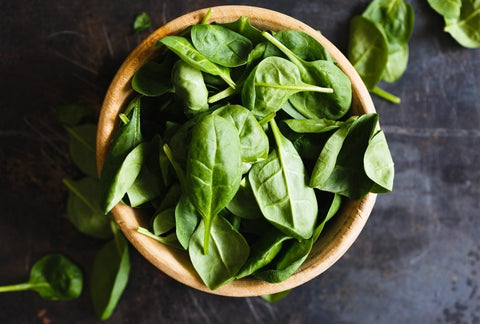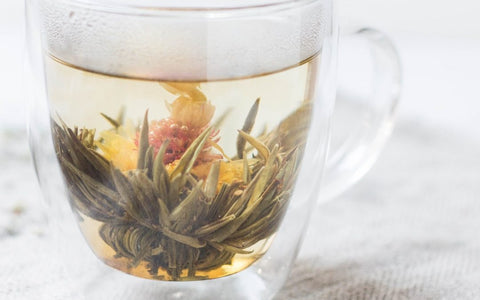Common Herbs for Cooking
Before we dive into the fresh vs. dried herb debate, let's get to know some common culinary herbs. Whether you have your own indoor or outdoor herb garden or are just curious about what to do with fresh herbs, this table will help you out.
| Herb | Flavor | Cooking Tip | Best Paired With |
| Basil | Subtle hints of pepper and mint | Add at the end of cooking to maximize flavor | Tomatoes, garlic, olive oil, oregano, pasta, onions, chicken, eggs, pizza, green leaf salads, bell peppers, zucchini, apricots, berries, figs, peaches, plums |
| Bay Leaf | Herbal and floral | Mostly available dried, fresh is significantly less pungent than dried. Put in at the beginning, remove before serving. | Slow-cooked sauces, soups, and stews, stocks, beans, game, chicken, lentils, potatoes, risotto, shellfish, tomatoes |
| Chives | Light oniony taste | Use raw, or at the end of cooking | Eggs, potatoes, sauces, stews and soups, salads, mayonnaise, butter, sour cream, vegetables, stir-frys, bread |
| Cilantro | Bright and citrusy; might have a distinctive “soapy” taste to others | Cilantro root (or Coriander) is usually used at the beginning while Cilantro leaves are used at the end | Spicy dishes, salsas, chiles, curries, salads, soups, chicken, fish, vinaigrette, apples, bananas, mangoes, pears, summer melons |
| Dill | Combination of celery, fennel, and parsley | Fresh has greater flavor than dry. Add at beginning or end of cooking | Fish, beans, hard-boiled eggs, beets, soups, sour cream, cream cheese, dressings, yogurt, chicken, potato salad, meats |
| Mint | Sweet, fresh, slightly astringent | Peppermint has a stronger flavor than spearmint. Could be added at beginning or end of cooking | Lamb, chocolate, pork chops, jellies, sauces, cocktails, berries, figs, and dates. oranges and limes, summer melons, cherries, apricots, plums, apples, pears |
| Oregano | A hint of sweetness with some spiciness | Strong, robust flavor especially if dried. Add at beginning of cooking; if adding in an herb bag, do not strip leaves from stems | Pizza, tomatoes, pasta, eggs, cheeses, eggplant, meats, dressings, oil and butter, pesto |
| Parsley | Flat parsley has a peppery bite and curly parsley is relatively bland | Flat parsley holds up better in longer cooking, curly looks great as a garnish. Stems have the strongest concentration of flavors and can be added diced finely or in a bouquet garni | Fish, vegetables, salad, rice, soups, stews, meatballs, pesto, sauces, marinades, bananas, coconuts, grapefruits, mangoes, pineapples, summer melons |
| Rosemary | Pine-like, astringent | Add whole stems at the beginning and remove before serving; great for the grill. Leaves can fall off so might want to use them in bouquet garni. If chopping then dice very finely as it can be quite tough | Lamb, potatoes, marinades and oils, eggs, fish, poultry, pork, tomatoes, onions, ice cream, oranges, apricots |
| Sage | Slightly peppery with a touch of mint | Robust flavor best with heavy foods. Add at the beginning of cooking | Meats, sausage, cheese, and cream-based items, sweet and savory bread, stuffings, beans, potatoes, risottos, tomato sauce |
| Savory | Peppery flavor, winter savory is more pungent than summer | Can be added at beginning or end of cooking | Beans, meat, poultry, grilled vegetables, game |
| Tarragon | Licorice, fennel, sweet | Can easily overpower dishes. The heat releases flavor, cook with at the beginning | Chicken, shellfish, eggs, bérnaise sauce, potatoes, vinegar |
| Thyme | Sweet, mildly pungent | Great paired when cooked with parsley and bay. Can be added at the beginning. If using stems, prepare for stronger flavor but remove before serving. | Broths, soups and stews, flatbreads, meat, poultry, potatoes, stuffings, marinades, cherries, figs, grapes, honeydew melon, peaches, pears |
Source: https://www.urbancultivator.net/cooking-with-fresh-herbs/
How Long Does it Take for Herbs to Grow Before They’re Perfect for Cooking?
Now that you’ve learned some cooking tips for fresh and dried herbs, you might also be wondering how long it takes for these herbs to grow from seeds before they’re perfect for cooking. Below is a table that could serve as a guide for you:

How to Keep Your Common Herbs Alive
Who would want their herbs to be harvested only once per growing season? Not me, surely not you too! Some of these common herbs are annual, some are perennial/biennial, and we want to share with you some ideas on how to keep them alive. To know more, you can check out this article.
Cooking with Fresh Vs. Dried Herbs
How to Use Fresh Herbs

Most chefs would always recommend you to use fresh herbs as they offer a pop of brightness and vividness to a dish that dried herbs just can’t give. This is especially true when you’re making a nice fresh garden salad, a zesty dressing, a delicate pasta, or a deliciously cheesy pizza.
Certain herbs like parsley, basil, chives, dill, cilantro, and tarragon are always better fresh and lose their distinctive flavor when dried. The science behind this is that these herbs contain volatile flavor compounds that are easily lost when exposed to heat. That’s why it is also better to add these herbs at the end of cooking or as a garnish before serving.
Another way to maximize the flavor of fresh herbs is by chopping them as finely as possible. The finer you chop your herbs, the more oils are released and the more fragrant your herbs will become. It’s usually best to chop delicate herbs like chives, parsley, cilantro, and basil right before you use them so that their aroma and flavor stay intact.
How to Use Dried Herbs

When can you use dried herbs instead of fresh ones? If you’re looking to make a thick and hearty soup, then dried herbs would be the perfect addition for some depth of flavor. Using dried herbs instead of fresh like oregano, marjoram, rosemary, thyme, bay, and sage will most likely provide a deeper and more seasoned flavor.
The reason why dried herbs are stronger than fresh is that their flavor compounds are non-volatile and therefore don’t evaporate when drying or exposed to heat. This makes the dried herbs flavor more concentrated, and that is also why you should use less amount of dried herbs in cooking than if you were to use them fresh. The normal ratio is 1:3, so if a recipe calls for 3 tablespoons of fresh rosemary, then you can substitute it with 1 tablespoon of dried rosemary and vice versa.
Another thing to note is that dried herbs have fewer oils because they are dehydrated. The oils are all condensed inside, and in order to bring those fragrant aromas and flavors out, you can try rubbing them in your hands, grounding them with a mortar and pestle, or cooking them on low heat. Dried herbs are perfect for soups and stews because the ample amount of liquid will hydrate the herbs and release all those delicious aroma compounds that will make for a savory dish.
However, you must keep in mind that dried herbs will also lose their potency over time and should be thrown out after a year. They will taste especially dusty and stale because of the oxidation from the drying process.
So remember, fresh herbs taste best when you add them at the end and dried herbs work best when you add them early on. And now that you’re equipped with all this knowledge of cooking herbs, there’s nothing stopping you from making a delicious homemade meal from all the herbs you grew (or will grow) from our Herb Seed Collection.








There are no comments for this article. Be the first one to leave a message!